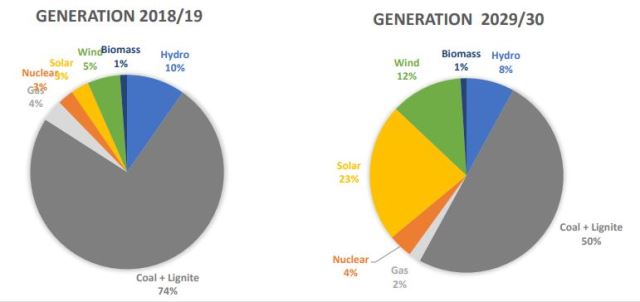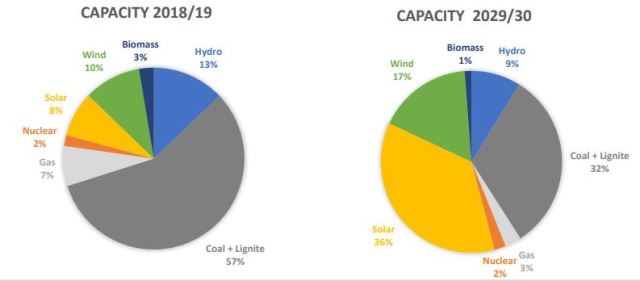India is likely to achieve 63 percent of its installed power capacity from non-fossil fuel sources (including hydro) by 2029-30, according to a report from the Central Electricity Authority (CEA).
This would significantly exceed India’s Paris agreement target of a 40 percent share of installed power capacity from non-fossil fuel sources by 2030.
The CEA report estimates that growth in new installed power capacity will lead renewables to generate close to 44 percent of all electricity consumed in India in 2029-30.
 In a briefing note released today, India Energy Transition Fuels Growth Path for Sustainable Development, IEEFA notes that CEA’s analysis predicts moderate growth in increased coal capacity (from net end-of-life coal plant closures), while gas and biomass growth are expected to be negligible.
In a briefing note released today, India Energy Transition Fuels Growth Path for Sustainable Development, IEEFA notes that CEA’s analysis predicts moderate growth in increased coal capacity (from net end-of-life coal plant closures), while gas and biomass growth are expected to be negligible.
CEA said thermal power capacity will reach 291GW by 2030 from the 225GW operating as of March 2019. Thermal capacity will drop from 64 percent to 35 percent of total installed capacity in only 11 years.
India will need 34GW/136GWh of battery energy storage systems by 2030 to balance the grid reliability and stability needs of 440GW of variable renewable energy capacity, supported by 73GW of hydro and 10GW of biomass.
“India dominates the list of countries with the most polluted cities on earth. Transitioning to clean energy can help the country achieve its twin objectives of strong economic growth and sustainability,” said Vibhuti Garg, the energy economist who wrote the IEEFA brief.
India has tendered 13GW of solar projects in the month of June 2019 alone.

